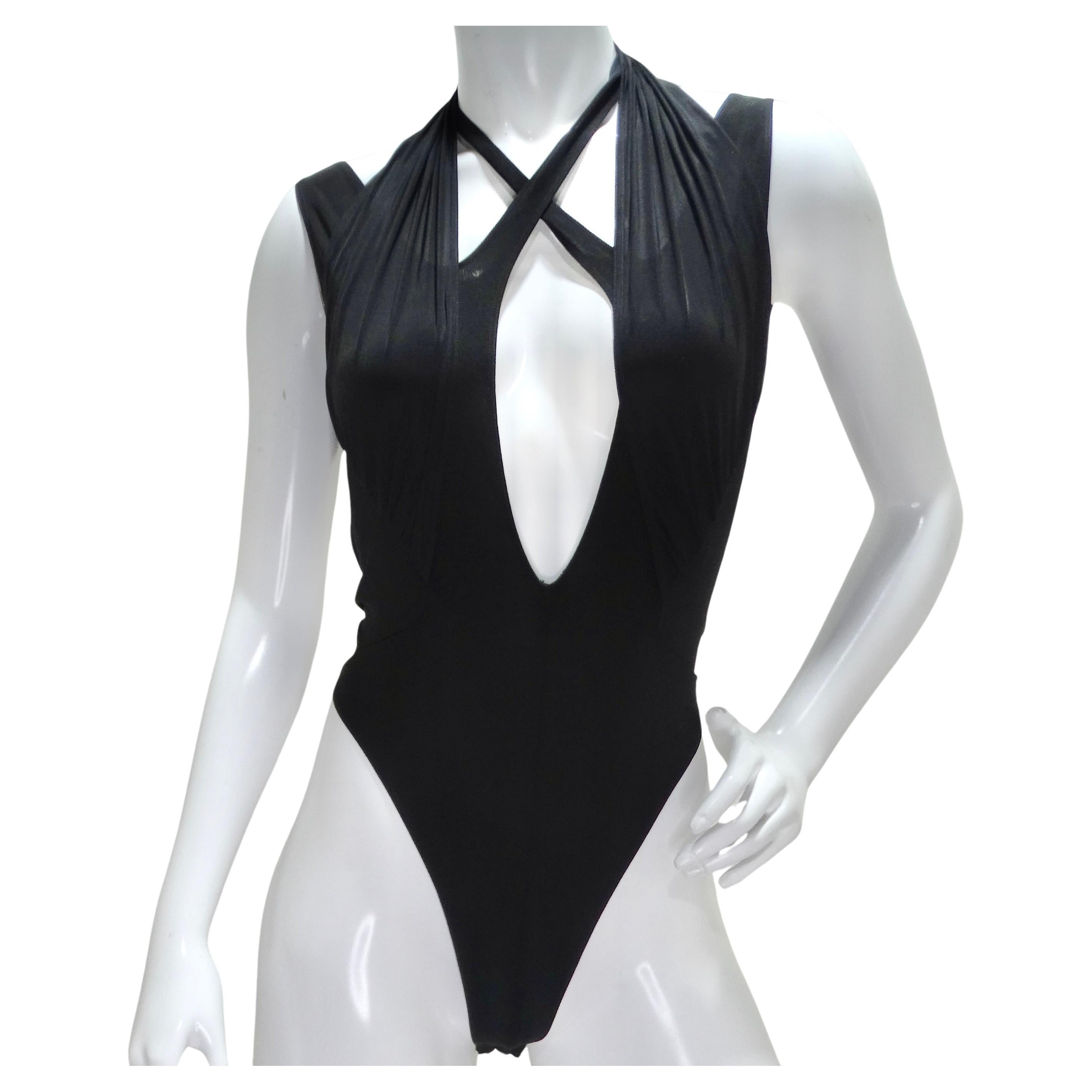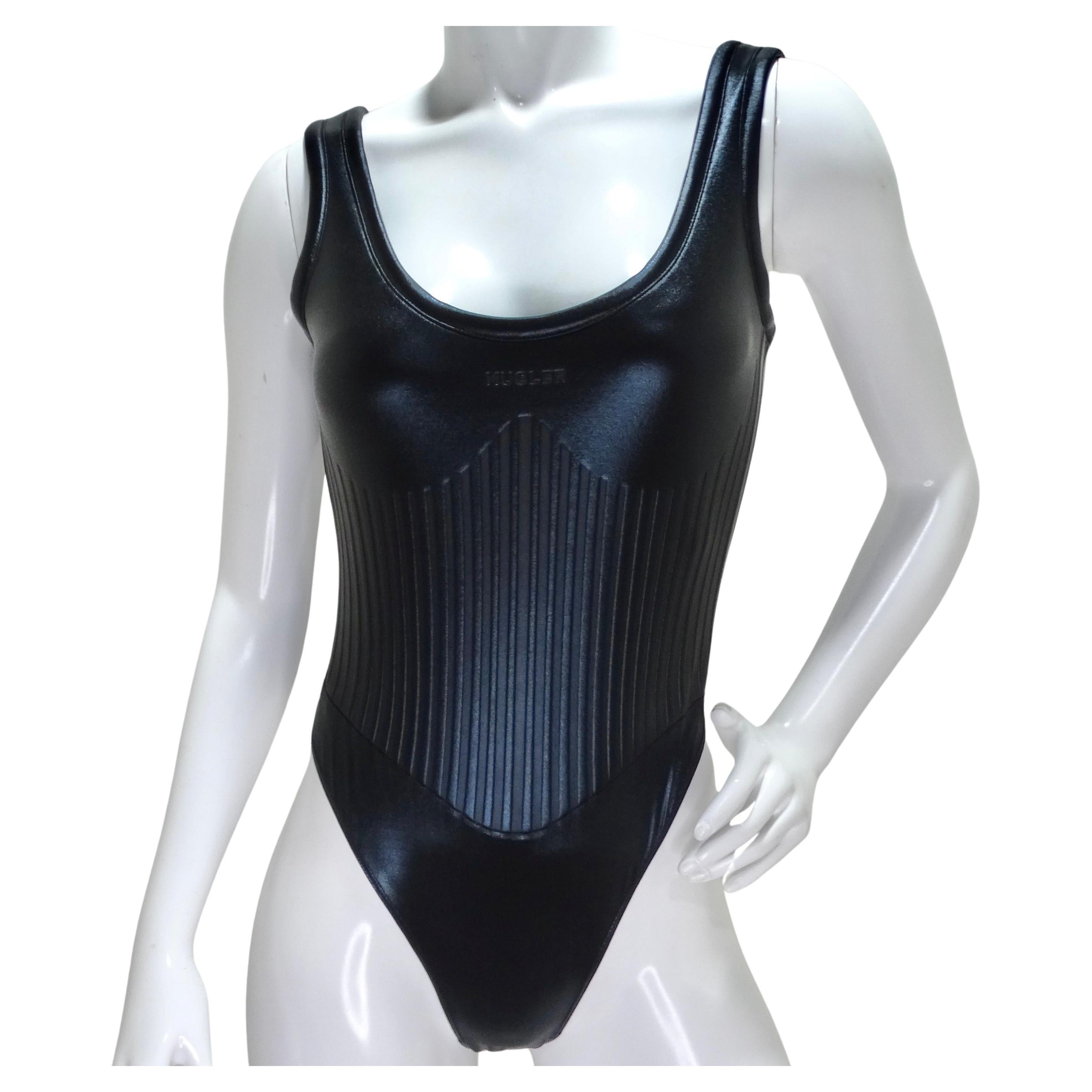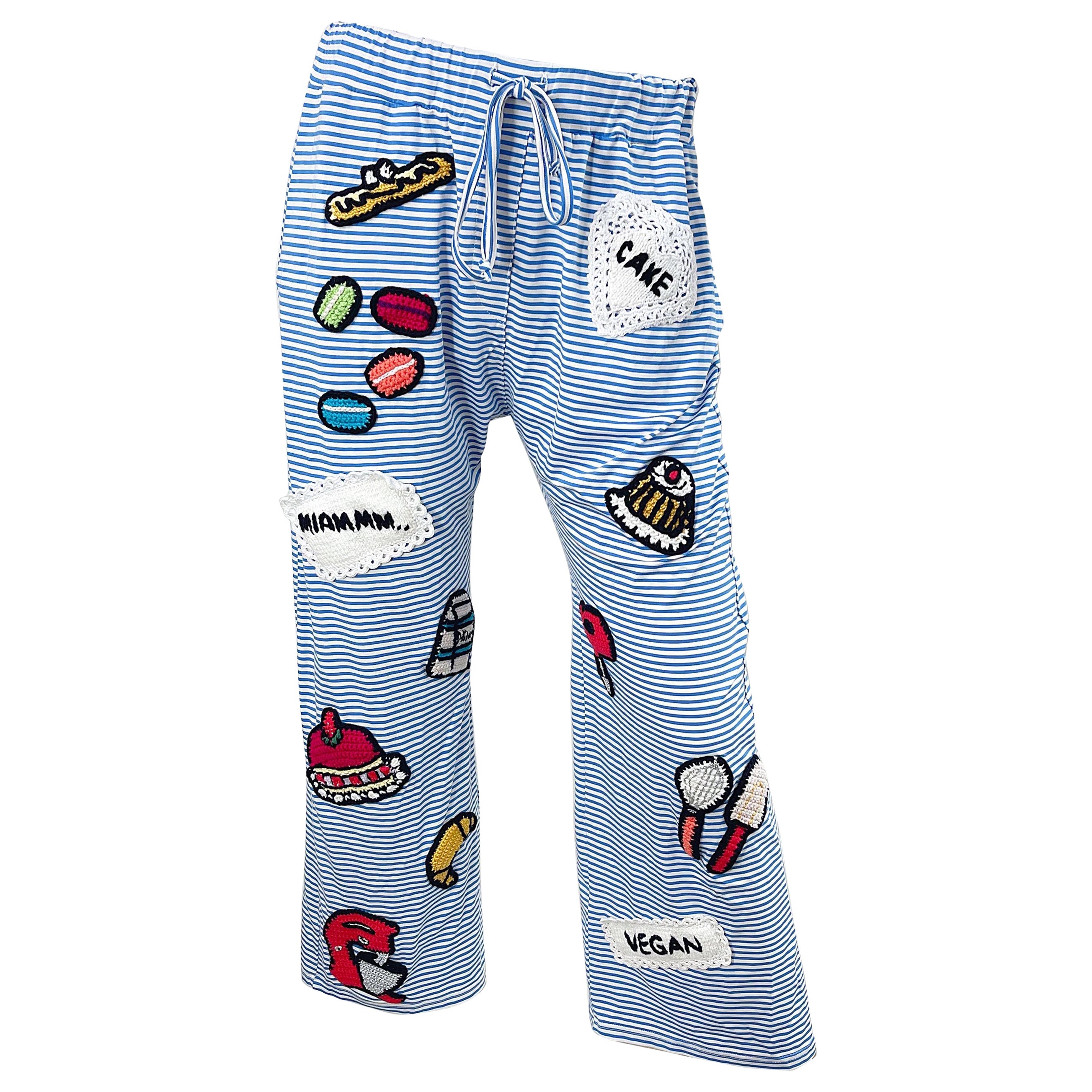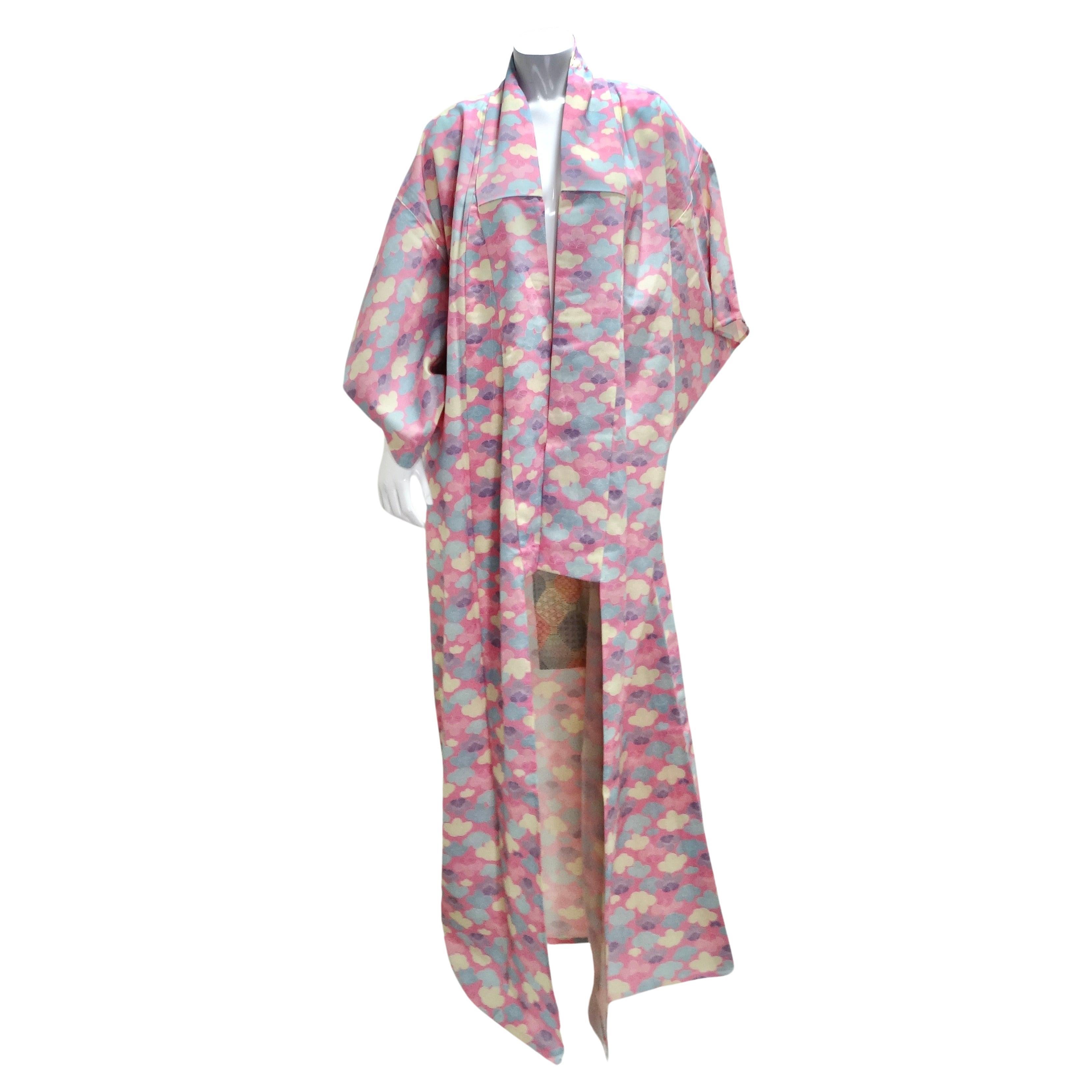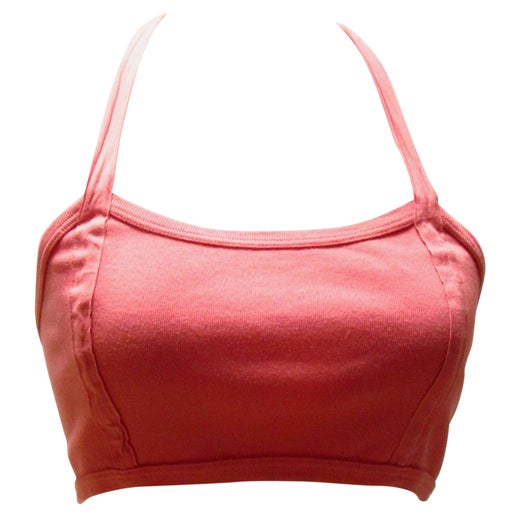MartinMargiela Early1990s UniqueUpcycled Garters&Crotch Velvet CroppedHalter Bra
About the Item
- Designer:
- Brand:
- Dimensions:Marked Size: FR40 (EU)
- Style:early 1990s (Of the Period)
- Place of Origin:
- Period:
- Condition:Wear consistent with age and use.
- Seller Location:Chicago, IL
- Reference Number:1stDibs: LU3244220519292
Maison Martin Margiela
Belgian designer Martin Margiela (b. 1957) — whose life, career, clothing designs and vintage shoes have become cult-collector obsessions — pushed those who attended his shows outside their comfort zones. In the years following his maison's 1988 debut, he toyed with creative and aesthetic paradoxes that persist in fashion today.
Consider the Spring/Summer 2001 shirt patchworked from vintage clothing labels, or his famous corset dresses made from tailoring dummies, from his Fall/Winter 1997 line. Or his oversize collection for Fall/Winter 2000. In 1992, Margiela told Dépêche Mode magazine, “My clothes appeal to women of a certain mindset rather than of a specific age or physique.”
Born in Genk, Belgium, in 1957, Margiela knew he wanted to be a fashion designer after catching glimpses of Parisian fashion on TV as a child. Although his parents discouraged this career choice as an oddly funny aspiration, Margiela enrolled in the fashion program of the Royal Academy of Fine Arts Antwerp. There, he befriended and graduated a year ahead of the Antwerp Six — the acclaimed group of Belgian fashion designers comprising Dries Van Noten, Walter Van Beirendonck, Ann Demeulemeester, Marina Yee, Dirk Bikkembergs and Dirk Van Saene.
Like many of his contemporaries in the 1980s, Margiela understood Paris fashion but felt a deep resonance with the deconstructed beauty espoused by Japanese designers Yohji Yamamoto and Rei Kawakubo, of Comme des Garçons. Margiela’s fascination with Japan influenced many of his earliest collections and designs, from a dress pieced together from broken plates to his iconic Tabi boots, inspired by the split-toe Japanese worker’s shoe, which dates back to the 15th century. He decided to launch his own line while working for renowned Paris designer Jean Paul Gaultier.
Margiela, Gaultier has often stated, was his best assistant. Even then, the 2019 film Martin Margiela: In His Own Words suggests, he was acutely aware of the widening gulf between the art and the business of fashion.
Margiela’s debut show was nothing short of spectacular. Set in a packed Café de la Gare in the still-seedy Marais district, it was also scandalous to the Parisian fashion set of the time. The designer tore up the conventions of contemporary couture presentations, most notably having his models, plucked from the streets and wearing ink-blotted Tabis, wend their way through the crowd. The show redefined the concept of the runway in a way that would later inspire such designers as Alexander McQueen and Demna Gvasalia.
While the notoriously private designer retired from fashion in 2009, for many Maison Martin Margiela collectors, his pieces capture the irreverence of the postwar, post-punk late 1980s and ’90s. Katy Rodriguez, cofounder of the cult vintage fashion shop Resurrection, is among those who felt a connection to Margiela’s clothing in the subliminal challenges it posed to the time’s beauty norms.
“Growing up in San Francisco and coming out of the end of punk rock, not wanting to be objectified, not wanting to be seen as a sexual object, not wanting your value to be just because you’re pretty — all those clothes played into all of that,” she says. “It really was a reflection of the kind of world the young people I knew at the time wanted to live in.”
Find vintage Maison Martin Margiela boots, evening dresses, jackets and more on 1stDibs.
- ShippingRetrieving quote...Ships From: North Adams, MA
- Return PolicyA return for this item may be initiated within 1 day of delivery.
- 1998 AFVandevorst FirstCollection Lingerie Boxed SheerBodystockingHosieryCatsuitBy A.F. VANDEVORSTLocated in Chicago, ILAs nostalgia for antique silk stockings repeatedly tapped for lingerie-inspired A.F. Vandevorst womenswear until its Belgian founding design duo retired their brand in 2020, the obso...Category
1990s Belgian Bodysuits
- ChristainDior Galliano 2001 MadeInFrance LaceNetCorset Black HalterBustier BoxedBy John Galliano, Christian Dior Haute CoutureLocated in Chicago, ILWhile John Galliano was creating haute-couture in Paris for French Maison Christian Dior as its artistic director beginning in the late 1990s, he designed this "Made In France" black stretch-lace-and-net low-back boned corset featuring a bold halter neck, padded underwire bustier with a rounded bustline silhouette, and cinched waist with a lettuce-edged ruffle. Along with leading couture-fashion designers Jean-Paul Gaultier and the late Vivienne Westwood, Thierry Mugler and Gianni Versace, Galliano is closely associated with the popularity of the contemporary corset, which was the focus of his most recent couture show in 2024 as the creative director of Paris-based Maison Margiela for the past decade. Notably, a Galliano corset from his turn-of-the-century Christian Dior collection--with like tags and similar low back with bustier--can be viewed online among the collections of the Underpinnings Museum, which is dedicated to the most outstanding lingerie. In addition to the tags noting "Christian Dior Made In France" along with the size, Galliano added subtle logo embroidery to the cleavage that reads "DIOR". There is no tag noting the materials of the multiple laces, tulle mesh, bones and additional padding or strap fabrics, which seem primarily synthetic for desirable stretch-to-fit. Instead, care-instruction symbols can be found on the back of the size tag. The neck straps for this B-cup French-size 85 or U.S.-size 34 can be adjusted to one of the three tiers of hooks that suits the wearer, while the corset has two tiers of hooks to cinch the waist. As worn by our small-size mannequin, the top will flatter even an A-cup breast size. As noted in our listing sidebar, the buyer will receive the corset packed in its original Christian Dior silver shoebox-size cardboard packaging, while the lingerie will be wrapped in the original logo tissue paper. The box and paper are in good condition without rips or perforation, while the lingerie is in like-new excellent condition as if it had only been tried on and not worn for an event. For price comparison, a later dated Galliano/Dior bustier corset top--with like tags but strapless--recently sold on 1stDibs for $6,200. The previous sole owner of our top recalled making their purchase as new lingerie in 2001. This French ready-to-wear complex-structure garment should not be confused with international lingerie lines with different but similar labels--"Christian Dior Intimates...Category
Early 2000s French Corsets
- McCartney 2003 Prototype LingerieLike Lace SilkChiffon Satin Black HaremPantsBy Stella McCartneyLocated in Chicago, ILAs lingerie-like runway Look 23 for her Spring/Summer 2003 collection from which we acquired this unreproduced hand-finished one-off prototype, British Stella McCartney debuted these...Category
Early 2000s British Petticoats
- Couture MartinMargiela 1998 WorkOnPaper & Artisanal Line0 WhiteLingerie BoxedSetBy Maison Martin Margiela, Martin MargiellaLocated in Chicago, ILAs conceptual art while he transitioned to Hermes Creative Director in 1998, Belgian Martin Margiela--whose creations today debut in the setting of a contemporary-art gallery priced at upwards of EU$150,000--created this stenciled or block print. Conceived by arguably the most culturally influential contemporary fashion designer since Gabriel "Coco" Chanel, it is part of a limited-edition-of-two white-boxed set that includes the couture Maison Martin Margiela "Artisanal Line 0" body-harness lingerie in its maker's signature color white for Spring 1998. The same lingerie--one white and the other black--starred in a film made by Margiela among the five that he screened to present his Spring/Summer 1998 "Flat Collection" in Paris at the Conciergerie. In that film titled "4", which begins with a view of the iconic topless tabi "boots", the hands of Margiela's white-labcoat-clad assistants enter the frame to manipulate different garments on a model who initially wears the exterior lingerie (see our photos) as if jewelry. A simple dark collared coat, a white collared button-down shirt, and a dark button-down cardigan--all with the "displaced neckline" or "displaced shoulder" of the flat-hanging clothes--are transformed into new collarless plunging v-neck garments, which appear to be ruched when folded under the harness of the lingerie. Both black versions of the lingerie are in museum collections. In Martin Margiela's home-country, the ModeMuseum (MoMu) archived its collected piece as OBJ7660. In the 2018 Parisian retrospective exhibition at Musee de la Mode/Palais Galleria when its artistic director was Martin Margiela (working with Curator Alexandre Samson), the second black lingerie was featured on a mannequin and collected the same year by the Vogue Paris Foundation. Other conceptual designs from this same 1998 collection of jewelry were acquired by TheMet museum in Manhattan. Without the restriction of the use and function of clothing, the small uncreased print--on a card that can be removed from the interior-box bottom that it loosely spans--shows the buyer how to endlessly fashion unique tops using the structural-elastic lingerie as an undergarment for their own pre-worn button-down shirts. This is a more obvious example of the once avant-garde concept of anti-fashion upcycling that Martin Margiela introduced to challenge social and fashion-industry norms by the 1990s, which echos the revolutionary anti-art of Marcel Duchamp. Essentially, valuable art/fashion can be made from everyday vintage objects. While Duchamp did so in 1917 with a men's porcelain urinal titled "Fountain" attached to a gallery exhibition wall, they both made the point that it is the way that such items are reassembled that can make the result a progressive statement. What makes the print so special and worthy of framing for display is that, without words, the three numbered images on a single white card encapsulate the before-its-time fashion manifesto of Martin Margiela to recycle fashion in remarkable new wearable ways, such as harnessed by his unique lingerie. According to The New York Times in its 2021 feature-story that reflected on his radical fashion design and delved into his crossover art, Margiela "changed how we dressed in the 1990s", while his art embodies "the visionary man he has always been." At a turning-point shortly after Margiela designed this couture set in 1997, his personal manifesto became more difficult to accomplish in his fashion career as the new leader of France's historic luxury fashion-house Hermes, for which his first womenswear collection was presented for Autumn/Winter 1998. Frustrated by the limitations of the industrialized luxury trade and conglomerate conflicts with his closely guarded privacy, the famously "invisible" designer pre-maturely retired from the fashion industry in 2009 to independently build on his clever artistry in other mediums. Margiela continues to demonstrate what he often told his fashion teams: "The less you have, the more creative you are as a designer." This minimal finely-crafted lingerie without size or gender restriction--composed of adjustable "polya-elasthanne" straps with a clear anti-slip strip on the underside and three silver-plated metal double-rings--can be worn either as a concealed structural undergarment or as a visible jewelry-like body harness in appreciation of its meaning as a foundation for recycling fashion, pure form, and meaningful color. While the initial Maison Martin Margiela ready-to-wear brand tag until the late 1990s was a distinct corner-sewn unbranded white label accompanied by tags for origin and materials/care, the couture version for this lingerie is a single tiny white unbranded tag stitched in a line near the end of the waist strap, noting in English, "Made In France," with succinct material/care identification. The set's original white unbranded box and its white black-typed couture-identification sticker complete the "invisible-brand" aesthetic. We interpret the black-type codes on the aged box-sticker (“E98 ST HAUT; Struct Elas Blanc; 02; TU"): Spring 1998 Haute Couture; white structural-elastic garment; Artisanal Line 0 edition of two; one size only. The print, lingerie and box are in very good condition as shown in the photos with only one mark on the rear edge of the exterior box-lid. Although initially tried on by the sole owner to realize a restructured shirt, the lingerie body-harness was never worn. It was collected in Belgium at the Brussels boutique where Martin Margiela initially sold his brand with his founding business-partner Jenny Meirens since 1988. Prior, Margiela worked for several years as a fashion-design assistant to Parisian Jean Paul Gaultier. Both designers have since received independent museum retrospectives internationally--from Paris' Grand Palais and Musee Palais Galliera (The City of Paris Fashion Museum) to NYC's The Brooklyn Museum and Antwerp's MoMu. While others continue to try, Martin Margiela (b.1957) is the only leading fashion designer to have made a full-time transition to the commercial contemporary-art world with such highly valued works. As a rare revealing piece of both fashion and art history, the increasing value of this Maison Martin Margiela 1997...Category
1990s French Sculptures
- 1950s LingerieLike Ruched CrepeSilk & SemiTransparentOrganzaNetSkirt MiniDressLocated in Chicago, ILThis unusual mid-century lingerie-style black semi-transparent mini dress that conjures a historic pinup-girl like Bettie Page is suitable as a cocktail dress as part of an evening ensemble. It was probably meant by its New York designer to be paired with slim cropped pants, which became popular in The States after worn by Hollywood-movie actresses Audrey Hepburn and Marilyn Monroe. The A-line dress was most likely made by the former ready-to-wear fashion company following the revolutionary debut by French Christian Dior of his couture cinched-waist-voluminous-skirt "New Look" collection, whereafter German Sonja de Lennart introduced "Capris" in 1949, and American Hugh Hefner launched Playboy magazine in 1953. The complex hourglass-shaped garment features a double v-neck four-seamed ruched lined bodice in a crepe silky woven fabric. Its defined gathered bust extends from the chest seams at two angles to form short dolman sleeves only in the front, while there are arm seams in back. The gathered see-through black faux-lace organza flared skirt reveals a black velvet-textured scalloped floral pattern with a net underlayer. With beige lining, the self-trim band at the waist enables the folded scalloped-lace pattern to continue to stand out on the opaque black torso. The edges of the peplum and sleeves are further cut in a scallop shape to resemble more delicate eyelash-lace trim. The brand label of the obsolete line is the only interior tag that remains. Camouflaging the midsection, the flattering dress will best suit a U.S.-size 6. It can also be worn by larger sizes with a relatively slim waist and small or large bust as there is no restriction at the hips or wide armholes. At the waistline, a hook and looped cord fasten over the bypass zipper to better conceal it. Notably, the steel-tab-and-teeth zipper is an original U.S-made Murlen model, which was used in new clothes from the 1940s to 1960s and helps to date the mid-century dress.Category
1950s American Mini Dress
- CommeDesGarcons 2003 RunwayLook1 Ruched Parachute Convertible White Dress GownBy Comme des Garçons, Junya Watanabe Comme des GarçonsLocated in Chicago, ILJunya Wantanabe made this inimitable white ruched floaty sleeveless semi-transparent dress with distinct parachute elements as "Look 1 and 2" (see photos) for the Parisian fashion show debut of his Spring/Summer 2003 collection, which was produced by his design mentor Rei Kawakubo's Japanese brand Comme des Garcons. The stunning combination of contrasts range from romantic-and-combat themes, gathered-and-flowing construction, raw-and-finished seams, soft-and-hard materials, and cutout-and-semi-transparent fabric. Secured on the exterior of the dress with bold silver-metal hardware, the 100%-cotton grosgrain-ribbon parachute-like straps are partly enclosed within multiple diagonal and vertical ruched channels to enable adjustment of the light synthetic-fabric draping and swags, such as for lengthening the dress. Strap ends freely hang from functional hardware on the front of the dress and below the sides as if they could be yanked to release the fabric into a drifty parachute sail. The reverse side of the dress is notable for the ruffled diamond-shaped cutout at the lower back and its framing set of adjustable looped parachute straps with a concealed white plastic buckle, which enables the hitched-up bottom to extend into a train like a dreamy wedding dress. This premiere-catwalk dress is further distinguished from others in Wantanabe's "Parachute Jumper" collection by the complexity of its top. Two ruched straps form an X-shape via metal-hardware at the upper back, extending to the front over the shoulders to form a ruched V-neck with linked straps that highlights your face. The soft folds of the neckline contribute to the raised ruffle collar, as well as flow to the shoulder seams. The hand-cut hem was designed unfinished and meant to fray, although it has not given its minimal wear and very good condition consistent with only age and storage. See our photos of the care/material tags. All tags remain, including from the Italian concept-store 10 Corso Como, where it was purchased in Milan. The "Made in Japan" size is a large-running "S" due to the pullover-style of the dress, which is equivalent to an Italian-size 44 or U.S.-size 6. In addition to wearing as a convertible dress...Category
Early 2000s Japanese Evening Dresses
- Mugler Black Criss Cross BodysuitBy MuglerLocated in Scottsdale, AZIntroducing the Mugler Black Criss Cross Bodysuit, a bold embodiment of sleek modernity and undeniable allure. This sleeveless viscose jersey bodysuit in timeless black features a V-...Category
2010s Bodysuits
- Mugler Black Embossed Scuba BodysuitBy MuglerLocated in Scottsdale, AZIndulge in the allure of the Mugler Black Embossed Scuba Bodysuit, a captivating piece that effortlessly blends sophistication and edgy design. Crafted from black metallic 'scuba' fa...Category
2010s European Bodysuits
- Michaela Buerger 2000s Novelty Baking Crochet Striped Lounge Pajama Pants Y2KLocated in San Diego, CAWho says loungewear can’t be chic? These mid 2000s MICHAELA BUERGER cotton cropped lounge pants feature blue and white stripes with crochet knitted baking themes throughout. Drawstri...Category
Early 2000s French Pajama Bottoms
- 1970s Handmade Japanese Pink Cotton Long KimonoLocated in Scottsdale, AZDo not miss out on the 1970s Handmade Japanese Pink Cotton Long Kimono—a captivating and unique treasure that beautifully embodies the artistry of traditional Japanese craftsmanship....Category
1970s Japanese Robes
- Art Deco Embroidered Fringe RobeLocated in New York, NYArt Deco Embroidered Fringe Robe from the 1920's which can easily be worn belted as a top or jacket. Wrap kimono style with no closures. Floral embroidered Art...Category
1920s American Loungewear
- Vintage Tan Kimono With Purple and Red Lamé Circles Dots & Pink LiningLocated in Portland, ORWe love vintage kimonos and this is a really wonderful one! This tan kimono has red and purple lamé circles or dots throughout. This raw silk kimono has pink silk lining at the top ...Category
20th Century Japanese Loungewear
